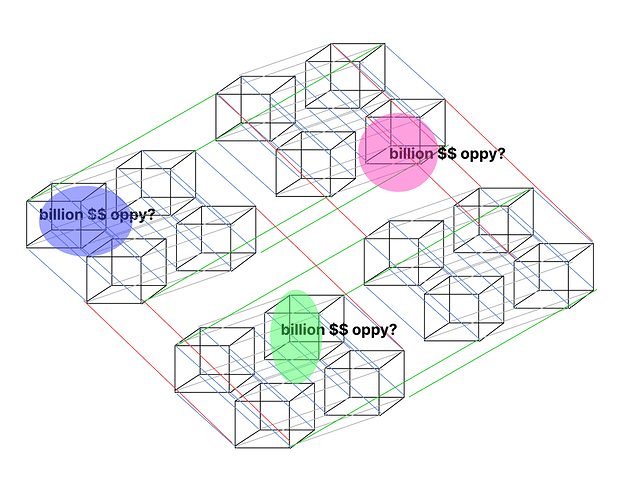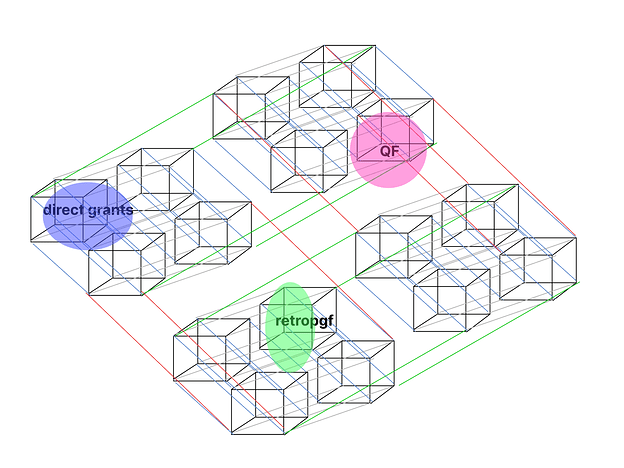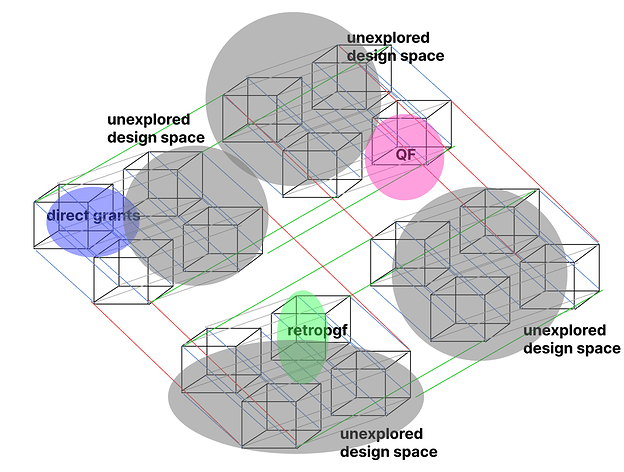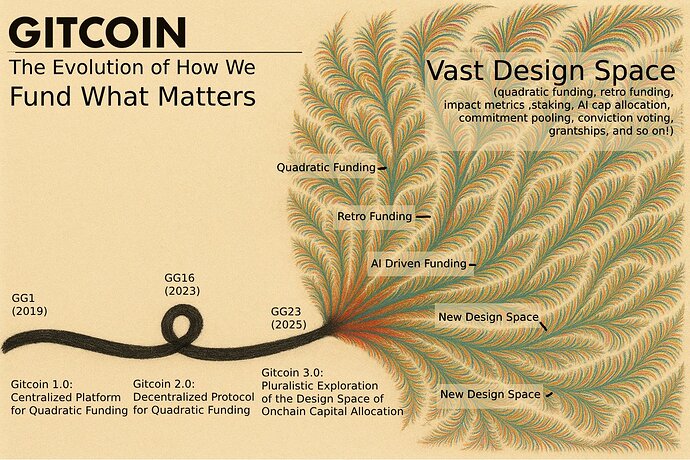TLDR
I draw inspiration from slime molds—organisms that explore their environments efficiently without central control—to suggest how DAOs like Gitcoin can better discover, learn from, and capitalize on opportunities in Web3 funding.
By exploring in parallel, documenting “slime trails” (lessons learned), and converging on high-value areas (like QF, RetroPGF, and grants), DAOs can navigate the funding ecosystem more intelligently. We should prototype, share learnings, and collectively evolve more effective, decentralized capital allocation strategies.
Slime Molds - the og decentralized value networks
Slime molds are a source of inspiration for me because they are a networked organism. This makes them a rich source of biomimetic inspiration for how to design DAOs. Some may even say your DAO is a slime mold.
Slime molds have a unique and fascinating method of finding food. They do not have a brain or central nervous system, but they use a form of spatial memory and optimized search patterns.

When a slime mold encounters a food source like bacteria, fungal spores, or decaying organic matter, it forms a network of tube-like structures, or pseudopodia, to engulf and absorb the nutrients. As it moves, it leaves behind a trail of extracellular slime.
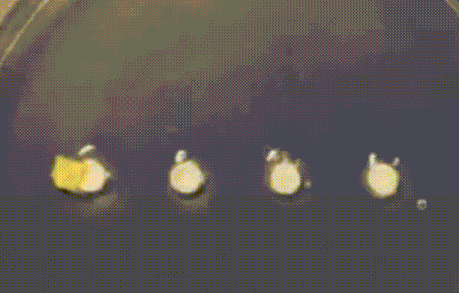
This slime trail plays a critical role in the organism’s search for food. It acts as a memory system, allowing the slime mold to avoid revisiting areas it has already explored. This efficient search strategy, where it extends its network towards unexplored areas while retracting from nutrient-poor or already explored regions, enables slime molds to find the most direct routes to food sources and optimize their foraging efficiency. Remarkably, this simple organism can solve complex mazes and spatial problems to locate food, demonstrating a form of intelligence and problem-solving ability without a brain.
How does this apply to us?
We are economic agents searching for value in an multidimensional design space with multiple billion $$$ opportunities to build new crowdfunding mechanisms/applications within it.
As we traverse this design space, we can be mindful of the two modes slime molds have when looking for resources:
- Explore - how do we find the resources?
- Enrich - how do we use the resources when we find them?
1. Explore
How do we find the biggest (ideally billion $$$ +) opportunities?
Memory
In biology, the slime trail plays a critical role in the organism’s search for food. It acts as a memory system, allowing the slime mold to avoid revisiting areas it has already explored.
Perhaps the lesson for us here could be to learn in public. What if we created some sort of memory system wherein we (or anyone else in the regen space) learns about something new and important, they publish it. We could all then benefit from each other’s explorations of the design space.
Efficiency
The slime mold’s efficient search strategy, where it extends its network towards unexplored areas while moving on from from nutrient-poor or already explored regions, enables slime molds to find the most direct routes to food sources and optimize their foraging efficiency.
Perhaps the lesson for us here could be to search efficiently + in parallel. We should retract from Nutrient Poor regions. We should be lean as we explore new design spaces. In particular, I think its really exciting how new Allo Protocol enabled apps can be created in a matter of days/weeks.
2. Enrich
When a slime mold finds food, such as bacteria or organic particles, it engulfs these particles using a part of its cell membrane. This process is known as phagocytosis. Essentially, the slime mold surrounds and encapsulates the food source with its membrane, creating a small internal pocket or vacuole. Enzymes are then secreted into this vacuole to break down the food into smaller, absorbable nutrients. These nutrients are absorbed into the slime mold’s cytoplasm, providing energy and materials for growth. This method allows the slime mold to efficiently process a variety of food sources in its environment.
Takeaways
- The tactics used in finding resources are completely different than those used once they have been found.
- Engulf the problem + break it down into composite parts.
- The resources we invest into finding/exploiting opportunities should be relative to how big the resources we find are.
Exploration so far
The design space we are aware of so far, we’ve found 3 resource sources
- QF - a TAM of ~ $20m/year
- Located in the democratic + sybil resistant part of the design space.
- RetroPGF - a TAM of ~ $40m/year
- Located in the retroactive part of the design space.
- Direct grants - a TAM of ~$10-100m/year, but we are competing for this design space
- Located in the “simple” part of the design space.
The Grants Stack/Allo teams are working within those opportunities…
Yet, there is a lot of potential in the design space we’ve not yet explored yet. We might want to spin up a thread that is going to explore those areas in parallel to the enrichment threads focused on the known opportunities (QF, direct grants, retroPGF).
We need to explore the design space. What is it? Show your work. Bonus points for doing it with an existing Gitcoin product.
In this post, I took an educated guess that these might be the most interesting opportunities out there.
